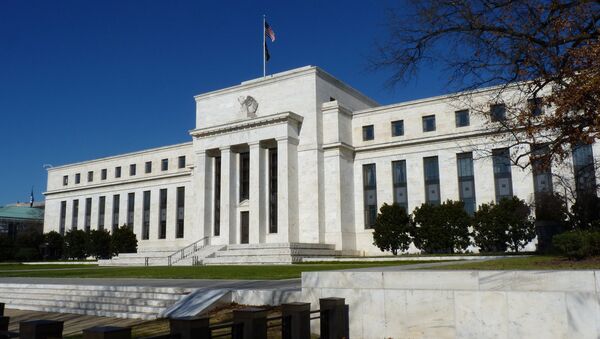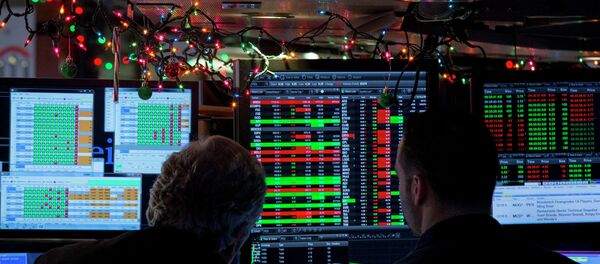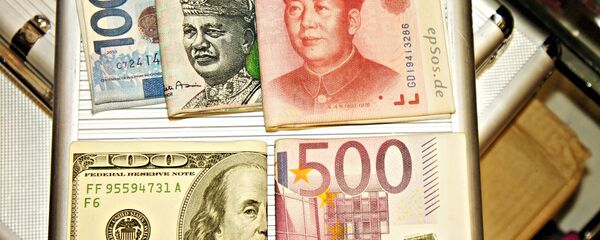MOSCOW, December 20 (Sputnik) — This week’s Fed policy meeting saw heated discussions in regard with the possible further tightening of monetary policy in the US. Federal Reserve Bank of Minneapolis President Narayana Kocherlakota advocated a prolonged period of the current ultra-low borrowing costs warning against tightening, pushing the nation toward the Japan-like near-deflation, while President of Philadelphia Fed bank Charles Plosser took a hawkish position on tightening, saying the prolonged stimulus in the accelerating economy may cause bubbles, increased instability and volatility.
Kocherlakota of Minneapolis’ Fed bank pointed out the threat of the looming low inflation as the main challenge to the US economy at this point. As growth in the US has accelerated to its fastest since 2003, the optimistic macroeconomic statistics prompted some Fed officials to push for the immediate rate hike. Easy monetary conditions during economic prosperity supports speculative activities, fueling bubbles in particular segments of the economy, therefore the Fed had been considering raising interest rates early next year. In objection to such a viewpoint, Kocherlakota pointed out the already low US inflation (currently below the 2% target) does not allow any tightening measures, as in this case the nation would be pushed towards the edge of harmful deflation.
The regulator’s “failure to respond to weak inflation runs the risk of creating a harmful downward slide in inflation and longer-term inflation expectations of the kind that we have seen in Japan and Europe,” Kocherlakota said as quoted by Bloomberg.
Kocherlakota dissented in response to the Federal Open Market Committee’s (FOMC) decision to change its rhetoric regarding the future tightening. Now, instead of preserving the ultra-low rate “for a considerable time”, the official Fed wording now is that the regulator will be ‘patient’ before hiking rates. Kocherlakota stressed that the regulator must not hike interest rates until the one-to-two-year inflation forecast reaches the target 2%. Presently, the US inflation is 1.4%. In his opinion, some of the now-ended QE measures should be brought back in order to spur inflation.
In turn, Philly Fed President Charles Plosser insisted on quite the opposite, having said the rate hike is a necessity. In his opinion, “waiting too long to initiate a gradual increase in rates could result in the need for more aggressive policy in the future, which could lead to unnecessary volatility and instability.”
In Plosser’s opinion, the Fed’s current policy is bringing on another economic crisis, as ultra-cheap borrowing costs in an accelerating economy fuel asset bubbles. He also expressed concern that the Fed is speaking in categories of time, not macroeconomic indicators, when discussing a future rate hike.
“I am afraid the [Fed] is not leaving itself the flexibility to respond to the data if we continue to see an improving economy,” Plosser said as quoted by the Wall Street Journal.




